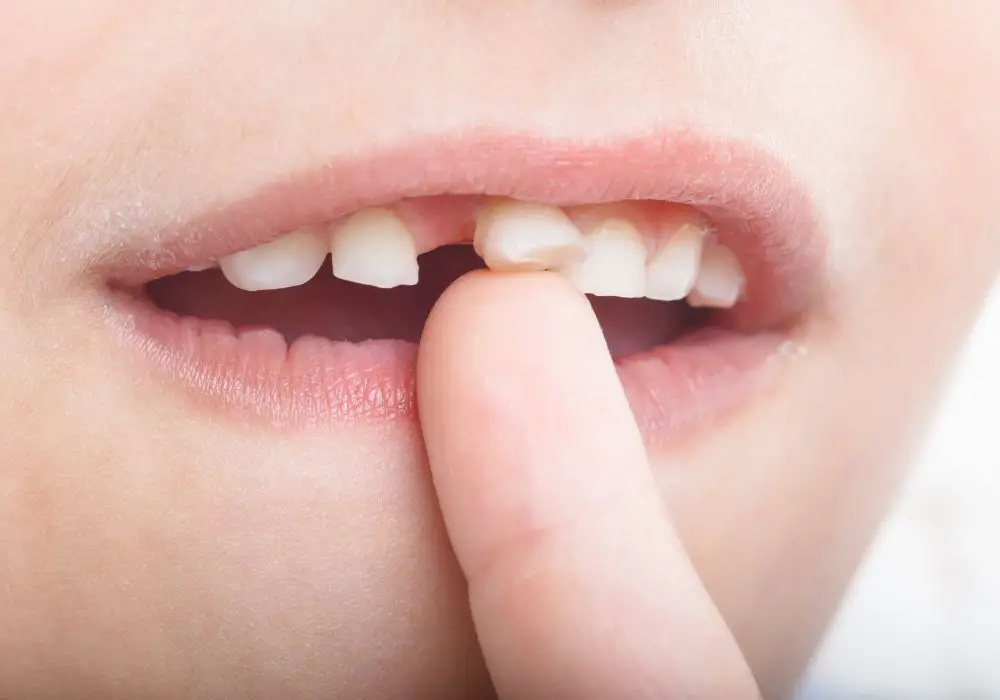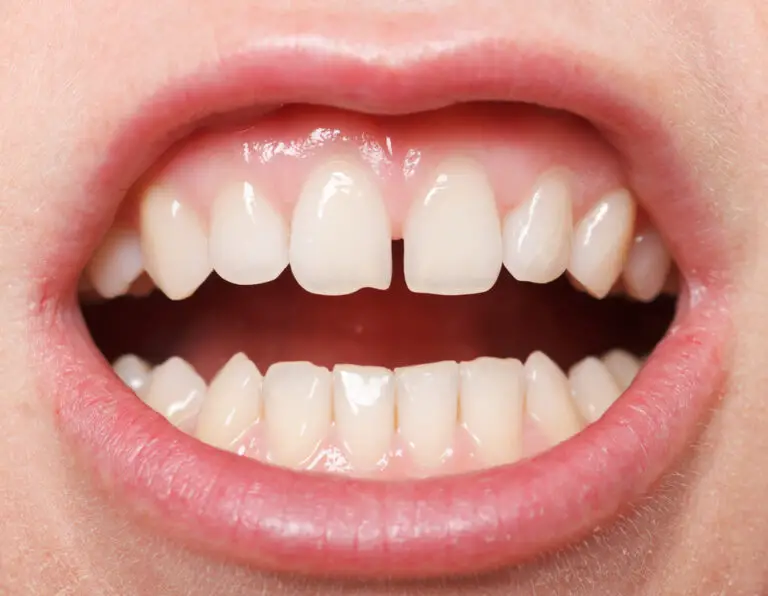If your child has a damaged or decayed baby tooth, you may be wondering whether it’s better to have it pulled or get a root canal. While both options have their pros and cons, the decision ultimately depends on the extent of the damage and your child’s overall dental health.
A baby root canal is a procedure that involves removing the infected or damaged pulp from the tooth and filling it with a special material. This can help save the tooth and prevent the need for further treatment down the line. However, it can be a more complex and expensive procedure than a simple extraction.
On the other hand, pulling the tooth may be a quicker and less expensive solution, but it can have long-term consequences. Baby teeth play an important role in the development of permanent teeth, and premature loss of a baby tooth can lead to issues such as misaligned teeth or a crowded mouth. Additionally, if the tooth is pulled too early, it can affect your child’s ability to speak and eat properly.
Understanding Baby Teeth

Baby teeth, also known as primary teeth, are the first set of teeth that children develop. They usually start to emerge between six months and one year of age. By the time a child is three years old, they should have a full set of 20 baby teeth.
The primary teeth serve several important functions, including helping children to chew food and speak properly. They also play a crucial role in the development of the jaw and facial muscles.
Both the permanent and the primary teeth have protective coatings on the outside called enamel. The function of this is to protect the inner layers of the tooth, such as the dentin. But when the enamel is damaged, the tooth can begin to decay. This is why it is important to take good care of your child’s teeth from an early age.
If a baby tooth is damaged or decayed, a dentist may recommend either a root canal or extraction. A root canal involves removing the damaged pulp from the tooth and filling it with a special material. This can help to save the tooth and prevent further damage.
On the other hand, if the tooth is too damaged to be saved, extraction may be necessary. Losing a baby tooth too soon can cause problems with the development of the permanent teeth, so it is important to discuss the best option with your child’s dentist.
In summary, baby teeth are an important part of your child’s development and should be taken care of properly. If a baby tooth is damaged or decayed, a root canal or extraction may be necessary to prevent further damage and ensure the healthy development of the permanent teeth.
What Is a Root Canal?

If you or your child has a tooth that is severely decayed, infected, or damaged, a root canal may be recommended by your dentist. A root canal is a dental procedure that involves removing the diseased or damaged pulp from the inside of the tooth. The pulp is the soft tissue that contains nerves and blood vessels that fill the tooth roots.
During the root canal process, the dentist will numb the area around the affected tooth and then create an opening in the top of the tooth to access the pulp. They will then use special tools to remove the pulp and clean the inside of the tooth. Once the tooth is cleaned and disinfected, the dentist will fill the space with a special material and then seal the tooth with a temporary filling.
After the root canal procedure, you or your child may experience some discomfort or sensitivity for a few days. Your dentist may recommend over-the-counter pain relievers or prescribe medication to help manage any pain or discomfort.
It’s important to note that root canals are typically very successful at saving damaged or infected teeth. In fact, according to the American Association of Endodontists, root canals have a success rate of approximately 95%. By saving the natural tooth, you or your child can avoid more extensive and costly restorative treatments, such as a bridge or implant, to replace the missing tooth.
However, in some cases, a root canal may not be possible or may not be the best option. For example, if the tooth is severely damaged or if there is not enough healthy tooth structure remaining to support a filling or crown, your dentist may recommend a tooth extraction instead.
Comparing Baby Tooth Pulling and Root Canal
When your child is experiencing a problem with a baby tooth, you may be wondering if it’s better to pull the tooth or get a root canal. Both options have their advantages and disadvantages, and the decision ultimately depends on the specific situation.
Baby Tooth Pulling
Pulling a baby tooth involves completely removing the tooth and its root from the socket. This is typically done when the tooth is severely decayed, infected, or damaged beyond repair. Here are some pros and cons of baby tooth pulling:
Pros
- Quick and simple procedure
- No need for follow-up treatment
- Can prevent further damage or infection to surrounding teeth and gums
Cons
- Can affect speech and chewing development
- May require a space maintainer to prevent teeth from shifting
- Permanent tooth may not grow in properly if the baby tooth is removed too early
Root Canal
A root canal involves removing the infected or damaged pulp from the inside of the tooth and filling it with a special material to prevent further infection. Here are some pros and cons of root canals:
Pros
- Preserves the natural tooth structure
- Can prevent the need for more extensive dental work in the future
- Permanent tooth can grow in properly if the baby tooth is saved
Cons
- More expensive than pulling a baby tooth
- May require multiple appointments
- Can be uncomfortable during and after the procedure
Ultimately, the decision between pulling a baby tooth and getting a root canal depends on the specific situation and the recommendation of your child’s dentist. It’s important to weigh the pros and cons of each option and make an informed decision that is best for your child’s oral health.
Pros and Cons of Pulling a Baby Tooth

When it comes to deciding whether to pull a baby tooth or get a root canal, there are pros and cons to both options. Here are some factors to consider:
Pros of Pulling
- Quick procedure: Pulling a baby tooth is a relatively quick and simple procedure that can be done in one appointment.
- Less expensive: In general, pulling a tooth is less expensive than getting a root canal. This may be a factor to consider if cost is a concern.
- No need for follow-up care: After a tooth is pulled, there is no need for follow-up care or additional appointments.
Cons of Pulling
- Affects speech and eating: Baby teeth play an important role in speech development and eating. Pulling a tooth too early can affect these areas.
- May cause crowding: If a baby tooth is pulled too early, it can cause the surrounding teeth to shift and become crowded. This can cause problems with the alignment of permanent teeth later on.
- Can lead to bone loss: When a tooth is pulled, the bone that supports the tooth can start to deteriorate. This can cause problems with the surrounding teeth and gums.
Overall, the decision to pull a baby tooth should be made on a case-by-case basis. It’s important to consider all factors, including the child’s age, the condition of the tooth, and the potential long-term effects of pulling the tooth. Your dentist can help you make the best decision for your child’s oral health.
Pros and Cons of Root Canal
Pros of Root Canal
Root canal treatment is a dental procedure that can save a tooth that is infected or damaged. Here are some pros of getting a root canal:
- Saves your natural tooth: A root canal can save your natural tooth, which is always better than getting it extracted.
- Pain relief: Root canal treatment can provide relief from the pain caused by an infected or damaged tooth.
- Efficient: The procedure is usually completed in one or two visits, and the recovery time is relatively short.
- Cost-effective: Root canal treatment is often less expensive than getting a tooth extracted and replaced with a dental implant.
Cons of Root Canal
While root canal treatment has many benefits, there are also some potential drawbacks to consider:
- Discomfort: You may experience some discomfort during and after the procedure, but this can usually be managed with over-the-counter pain medication.
- Multiple appointments: In some cases, you may need to visit the dentist for multiple appointments to complete the root canal treatment.
- Possible complications: There is a small risk of complications, such as infection or damage to surrounding teeth, during the root canal procedure.
- Long-term care: After a root canal, you will need to take good care of your tooth to prevent further damage or infection. This may include regular dental check-ups, good oral hygiene, and avoiding certain foods and drinks.
Overall, the decision to get a root canal or tooth extraction depends on your individual situation and the advice of your dentist. It is important to weigh the pros and cons carefully and make an informed decision that is best for your oral health.
Factors to Consider When Choosing
When deciding whether to pull a baby tooth or get a root canal, there are several factors to consider. Here are some important things to keep in mind:
Child’s Age
The age of your child can play a significant role in the decision-making process. If your child is very young and the tooth in question is a baby tooth, then extraction may be the best option. Baby teeth are not permanent, and they will eventually fall out on their own. However, if your child is older and the tooth in question is a permanent tooth, then a root canal may be a better choice.
Tooth Condition
The condition of the tooth is another important factor to consider. If the tooth is severely decayed or damaged, then a root canal may be necessary to save it. However, if the tooth is only slightly damaged or decayed, then extraction may be a viable option.
Child’s Pain Tolerance
Your child’s pain tolerance is also an important consideration. A root canal can be a lengthy and uncomfortable procedure, and it may not be the best choice for a child who is highly sensitive to pain. On the other hand, if your child is able to tolerate discomfort well, then a root canal may be a good option.
Ultimately, the decision of whether to pull a baby tooth or get a root canal will depend on a variety of factors. It is important to discuss your options with your child’s dentist to determine the best course of action.
Professional Advice
When it comes to deciding whether to pull a baby tooth or get a root canal, seeking professional advice is crucial. A dentist or endodontist can assess the situation and provide personalized recommendations based on the child’s age, the tooth’s location, and the extent of the damage.
Here are some factors that dental professionals may consider when advising between a root canal or tooth extraction:
- Age and development: If the child’s baby tooth is close to falling out naturally, extraction may be the best option. However, if the tooth is a crucial part of the child’s dental development, a root canal may be recommended to preserve it until the permanent tooth grows in.
- Location of tooth: If the damaged baby tooth is in the front of the mouth, extraction may be more straightforward. However, if the tooth is in the back of the mouth, a root canal may be necessary to avoid complications with chewing and speech.
- Extent of damage: If the decay or damage is extensive, a root canal may be necessary to save the tooth. However, if the damage is minimal, extraction may be a simpler and less invasive option.
It’s important to note that every child’s situation is unique, and there may be other factors to consider. Therefore, it’s essential to seek professional advice before making a decision on whether to pull a baby tooth or get a root canal.
Caring for Your Child’s Teeth After Treatment

After your child has undergone treatment for a damaged or decayed baby tooth, it is important to take proper care of their teeth to ensure healthy growth and development. Here are some tips to help you care for your child’s teeth after treatment:
Brushing and Flossing
Brush your child’s teeth twice a day, using a fluoride toothpaste and a soft-bristled toothbrush. Make sure to brush all surfaces of their teeth, including the front, back, and chewing surfaces. Flossing should also be done daily to remove any food particles and plaque that may have accumulated between the teeth.
Diet
Limit your child’s intake of sugary and acidic foods and drinks. Encourage them to eat a healthy, balanced diet that includes plenty of fruits, vegetables, and whole grains. Drinking plenty of water can also help wash away any food particles and bacteria that may be lingering in their mouth.
Routine Dental Checkups
Regular dental checkups are crucial to maintaining your child’s oral health. Schedule appointments with their dentist every six months, or as recommended by their dentist. During these appointments, the dentist will check for any signs of decay or other issues and provide treatment as necessary.
Sealants
Dental sealants are a protective coating that can be applied to the chewing surfaces of your child’s back teeth. They can help prevent cavities by creating a barrier between the teeth and harmful bacteria. Talk to your child’s dentist about whether sealants are a good option for your child.
By following these tips and maintaining a regular dental care routine, you can help ensure that your child’s teeth stay healthy and strong after treatment.
Frequently Asked Questions
What is a root canal?
A root canal is a dental procedure used to treat an infected or damaged tooth. During the procedure, the dentist removes the damaged or infected pulp from the tooth’s root canal. The root canal is then cleaned and sealed to prevent further infection.
Is a root canal better than an extraction?
In most cases, a root canal is better than an extraction. A root canal allows you to keep your natural tooth, which can help maintain the alignment of your other teeth. Additionally, a root canal is usually less painful and has a shorter recovery time than an extraction.
Are baby root canals painful?
Baby root canals are generally not painful. Your child will be given a local anesthetic to numb the area before the procedure. After the procedure, your child may experience some discomfort, but this can usually be managed with over-the-counter pain relievers.
Is baby root canal necessary?
A baby root canal may be necessary if your child’s baby tooth is infected or damaged. Baby teeth are important for maintaining the alignment of your child’s permanent teeth, so it is important to try to save them whenever possible.
What is a pulpotomy?
A pulpotomy is a dental procedure used to treat a damaged or infected baby tooth. During the procedure, the dentist removes the damaged or infected pulp from the tooth’s crown. The remaining pulp is then treated with a medicated filling to prevent further infection.
How bad is getting a baby tooth pulled?
Getting a baby tooth pulled is generally not a painful procedure. Your child will be given a local anesthetic to numb the area before the procedure. After the procedure, your child may experience some discomfort, but this can usually be managed with over-the-counter pain relievers. It is important to follow your dentist’s instructions for caring for the extraction site to prevent infection and promote healing.







